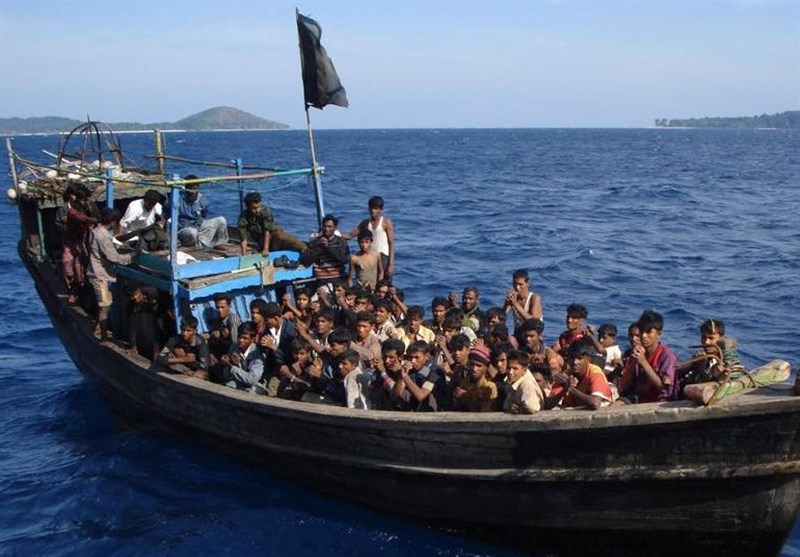UN Says 2022 among Deadliest Years for Rohingya at sea
TEHRAN (Tasnim) – The possible sinking of a boat with 180 Muslim-majority Rohingya on board will make 2022 one of the worst years for the community as refugees try to flee desperate conditions in camps in Bangladesh, according to the United Nations refugee agency.
Nearly one million Rohingya from Myanmar are living in crowded facilities in Muslim-majority Bangladesh, including tens of thousands who fled their home country after its military conducted a deadly crackdown in 2017, Al Jazeera reported.
In Buddhist-majority Myanmar, most Rohingya are denied citizenship and are seen as illegal immigrants from South Asia.
The UN High Commissioner for Refugees (UNHCR) said over the weekend it feared that a boat, which started its journey from Bangladesh at the end of November was missing at sea, with all 180 on board presumed dead.
The UNHCR said the vessel, which was not seaworthy, may have started to crack in early December before losing contact. “We hope against hope that the 180 missing are still alive somewhere out there,” UNHCR spokesman Babar Baloch told Reuters news agency.
The UNHCR estimates nearly 900 Rohingya died or went missing in the Andaman Sea and the Bay of Bengal in 2013 and more than 700 in 2014. Several hundred are feared dead or missing at sea this year already, before the latest incident. “One of the worst years for dead and missing after 2013 and 2014,” Baloch said of 2022, adding the number of people trying to flee had returned to levels seen before the COVID-19 pandemic.
“Trends show the numbers reaching back to 2020, when over 2,400 people attempted the risky sea crossings, with more than 200 people dead or missing.”
The number of Rohingya leaving Bangladesh in boats this year has jumped more than fivefold this year from a year earlier, rights groups estimate.
Baloch said it was not clear where exactly the boat with 180 on board went missing, nor whether the lifting of COVID restrictions in Southeast Asia, a favored destination for the Rohingya, was leading to the rush of people.
Sayedur Rahman, 38, who fled to Malaysia in 2012 from Myanmar, said his wife, two sons aged 17 and 13, and a daughter aged 12 were among the missing.
“In 2017, my family came to Bangladesh to save their lives,” Rahman said, referring to that year’s exodus of Rohingya from Myanmar.
“But they are now all gone … Now I’m devastated,” Rahman said. “We Rohingya are left to die … on the land, at sea. Everywhere.”
Earlier this month, two Myanmar Rohingya activist groups said up to 20 people died of hunger or thirst on what the UNHCR said was a separate boat that was stranded at sea for two weeks off India’s coast. The boat, with at least 100 people on board, was said to be in Malaysian waters.
Amid the feared deaths, some boats have made land or been rescued at sea.
On Monday the International Organization for Migration said in a statement that 57 Rohingya males disembarked in Indonesia’s Aceh Besar district early on December 25 with the support of local community members.
It said the male-only boat is believed to have set off from Bangladesh and spent nearly a month drifting at sea.
Indonesian officials did not immediately respond to a request for comment.
Two boats carrying a total of 230 Rohingya refugees, including women and children, landed on the shores of Indonesia’s Aceh province in November, while this month, Sri Lanka’s navy rescued 104 Rohingya adrift off the Indian Ocean island’s northern coast.






